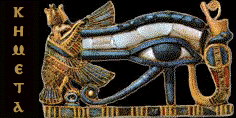

|
Instruction | Freedom Now | Membership | FAQs | Glossary |
| News | Reading List | Contacts | Links | Support Us | |
| About Us | Religion | History | Culture | Language |
The language of Kimata can be divided into two types or phases.
Midaw Nuthar or the Sacred Speech as it is called is a term often applied to
the Holy Language of Scripture. Ro` en Kimata No or Speech of The Black Nation is the term
generally applied to the Common Language of the Romathi People. In reality they
are the same language
though they represent two separate typological phases. The earlier phase is reserved for religious usage
while the later phase is employed for everyday uses. When we speak of Romathi language we will refer to
it as Romathit unless a distinction needs to be made in which case we will refer to
the classical type as Shimsit and the modern type as Kimit.
Romathit is a
member of the Asi-Africanah linguistic family (also known as Afro-Asiatic or
Hamito-Semitic). The main distinction between the latter two and Asi-Africanah being
that the former includes all African languages and recognizes that they are all
related genetically. When linguists talk about Afro-Asiatic or Hamito-Semitic,
they are speaking only of the North Eastern group of African languages to the
exclusion of the other three fourths.
Romathit falls into the Jiran group of the Yorda-Nila branch which also includes the 'Ami languages of Eastern Africa and South West Asia (typically classified as Semitic). While it's relationship with the languages of Asia has given some a cause to consider Romathit a non-African speech, it is quite firmly African as are all the other members of the Jiran branch. In fact it is the reverse which proves true and the Asian members of the Jiran branch descend from the African members as a result of conquests and trading settlements beginning in the Pre-Dynastic period (ca. 5000 BCE).
Now that you understand the position of Romathit in its family, it is time to learn a few key features of the language one of which is a root stem. A root is a cluster or core of a speech element to which other elements can be attached in various ways (including appending to the beginning, end or somewhere within the root itself) to construct a word. Roots in Romathit consist of 2, 3, or 4 radicals or consonants. This is the core of the system but the difficulty in learning it is often overemphasized. Most languages operate in a manner where words can be built from others either by adding two or more words or adding some other element to a word. If you think about it really this makes Romathit easier to learn because the process of word formation is very organized and allows more words from fewer roots than most other languages. With this in mind for instance one can construct no fewer than 5 words from each root not including special uses. Romathit is very logical and as you learn it you will begin to intuitively feel how the language works.
Romathit was written over a period of several thousand years and is the oldest written and recorded language in the world. It was written in several scripts the first called like the older phase of the language Midaw Nuthar (Hieroglyphic - Sacred Script), the second called Maji`at (Hieratic - Priestly Script) , the third called Sha'iyat (Demotic - Popular Script), and the fourth being Ro` en Kimi (Coptic - Egyptian Script). Despite claims to the contrary giving Sumerian or other languages the credit, three facts remain irrefutable: 1. That Romathit was the first written language in the world. 2. That it has a textual and historical development of writing from the earliest stages. 3. That its writing system was borrowed by the cultures used in trying to supplant its primacy.
Some have claimed that the people of Ancient Kimat did not write the vowels in their language and it is impossible to determine the sounds of the actual language. While it is true that the vowels were unwritten, it is not true that they are unmarked or unknown. The consonants were either spelled out individually or in groups and the vowels, were indicated by the context of the word or by determinatives which are little graphical devices for telling the meaning of the word. The vowels then or sound of the word was therefore intimately tied to the meaning. It is absurd to suggest that the people didn't know the sound of their own language, obviously they did. They must have and did have a system then for understanding the sounds of the language. It was not merely to insert an 'e' as many do today but to express the words in a living language. This 'e' is seen in many Romathit words like hetep and seneb, and when something else appears like in ankh, or udja, it is merely because the written word has a consonant like 3 or ' that is not used in English and so transliterated as 'a' or w or y which they often transliterate as 'u' and 'i'.
To put an end to this abomination and deplorable practice of wreaking havoc on the Divine Words, we must make known to the world that Romathit was and is in fact a 'living' language and not some artificial construct to decipher by adding 'e' and corrupting the consonants into vowels to render it pronounceable.
. This site and all contents copyright ©
Kimata.
If you have any Questions or Comments or want to report a broken link please
email Webmaster.